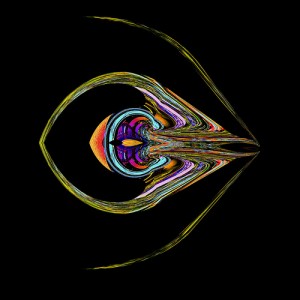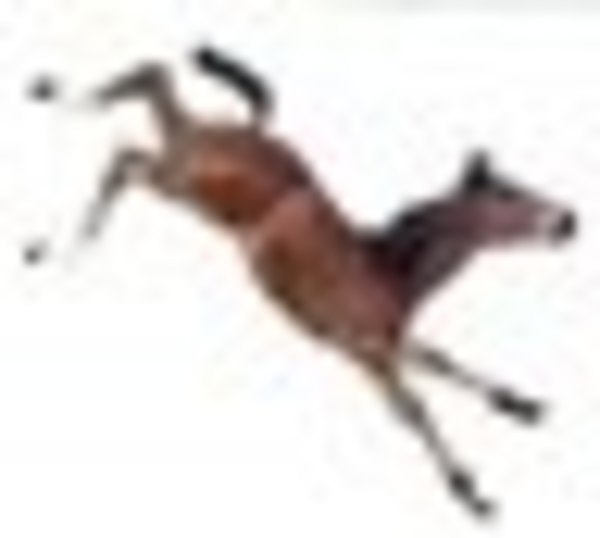Equine Diseases: Piroplasmosis Turns the Table; Watch Washington State Research Video on Tick-Borne Diseases
- March 10, 2017
- ⎯ Fran Jurga

An abstract view of a harmless wood tick, byFrank Bonilla, via Flickr
I can remember being told that the World Equestrian Games would never come to the United States. Not for political reasons or FEI reasons or even horse sport difference reasons, but for horse health reasons. I was told that the United States would simply never allow an open worldwide competition–unless the internationals from certain countries wanted to forego bringing their own horses and ride ours. Hosting the Olympics had been bad enough. But a WEG? It would never happen. Not in my lifetime.
The reason? We don’t want their diseases. And we simply would never allow “certain countries” to bring horses here. Because, you know, they have diseases. Makes that Diseases.
It’s now 43 days before the 2010 Alltech FEI World Equestrian Games and those words of wisdom have been turned upside down. We have some of the same diseases that we swore we wouldn’t let in via a big international horse event. It happened anyway. We didn’t need a mass invasion of horses.
A 14-page report, Equine Piroplasmosis and the 2010 World Equestrian Games, was published by the Veterinary Services office of the Animal and Plant Health Inspection Service (APHIS) of the U.S. Department of Agriculture in 2008 and probably researched and written quite a bit before that date.
On the first page of text we learn: “EP occurs in South and Central America, the Caribbean (including Puerto Rico), Africa, the Middle East, and Eastern and Southern Europe. The United States, Canada, Australia, Japan, England, Iceland, and Ireland are not considered to be endemic areas.” (Ah, those were the days!)
In other words, most of the USA’s equestrian super-power pal nations (Germany, The Netherlands, Scandinavia and France are not mentioned on either list) are free of EP. But that was then. Ireland, too, has had a case of EP in the past year.

Matt Allworth (“MonkeyGrip”) shares his microscopic view of the Australian paralysis tick.
As with any war, the fight is geographic. Today North Carolina announced that it is up to 11 cases for this year. EP is now on record in 20 states.
In 1988, the USA had its last cases of equine piroplasmosis, or so we thought. Then suddenly, in September 2008, 20 horses on six farms in Florida tested positive for the disease. In May 2009 there was a racehorse in Colorado and in June, EP showed up in Missouri, that October it was in Texas, then some of those horses shipped to New Jersey and tested positive in November. Fast forward to July 2010 and we had a positive case in New Mexico. One count tallied over 450 horses with EP in the United States.
Yet, mention emerging diseases to horseowners and you get a yawn. When the infectious disease lecture time comes at a conference, the seats are empty. “Oh, there will be a vaccine for that….”
We should be worried. A potentially-deadly equine disease rarely seen in the United States has popped out of nowhere to pose a serious, new threat to our multi-billion dollar horse industry and, more importantly in our eyes and hearts, to our much-loved equine companions. At this time, there is no vaccine and no real cure.
How can we stop this advancing threat and protect the health of our animal companions and the economically important U.S. horse industry? Who can stop it? How soon can they stop it? How much will it cost?
Or is it already too late?
These are some of the questions I’d like to ask the researchers at Washington State University (WSU) College of Veterinary Medicine, where Dr Don Knowles, a USDA scientist, is leading critical research to stem the spread of equine piroplasmosis?and other animal diseases?through development of knowledge and novel vaccines. He and his team are also exploring ways to possibly clear the disease from infected horses and to improve diagnostic techniques.
In March 2010, WSU brought Dr. Knowles to Seattle to make a formal presentation about his efforts to thwart equine piroplasmosis. But even then, we didn’t know that the disease would continue to persist along the southern tier of states. And now it is creeping northward.
Dr. Knowles’ video is available online; I hope you will take the time to sit down and watch it. There is about ten minutes of formality at the beginning, and you could be forgiven for skipping that, but I think that we all need to get to know EP.
“Know thy enemy”–isn’t that what they say?
Click to watch the full Washington State video and/or Powerpoint of Dr. Knowles’ lecture.
And if you’re worried about the World Equestrian Games and whether your favorite equine athletes are going to contract EP, think again. The Kentucky Horse Park has made an exhaustive investigation of tick species in the area, as well as a search-and-destroy. In order to spread the disease, an infected horse would have to be bitten by just the right type of tick–not just any tick. That same tick would then need to drop off the infected horse and feed on a non-infected horse.
According to the WEG press release on EP, any piroplasmosis-positive horses that are competing will be shipped directly from their federally-mandated quarantine center to special stables within the Kentucky Horse Park, and will also be required to leave the country directly from these stables.
The Horse Park has been involved in an all-out eradication of ticks and it should be safe. In another year or two years or five years, the story may be entirely different. It has changed before; it can change again. And it probably will.
by Fran Jurga | 12 August 2010 | The Jurga Report at Equisearch.comBe friends withFran Jurga on Facebook.comDon’t miss Discover WEG with Fran Jurga for fun at the Games!Tweet









